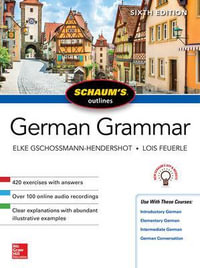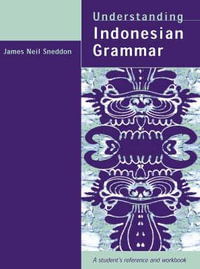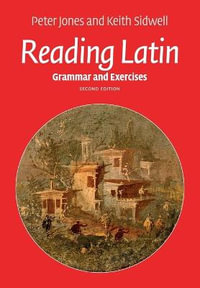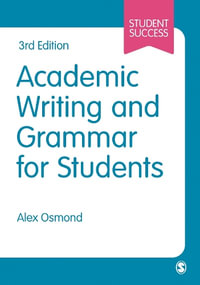| Quick Checklist | p. xi |
| General Editors' Preface | p. xiii |
| Preface | p. xiv |
| Acknowledgements | p. xvi |
| Overview of Vocabulary Issues | |
| Vocabulary Use and Acquisition | p. 3 |
| Ten key issues | p. 3 |
| Vocabulary is an important component of language use | p. 3 |
| A large vocabulary is required for language use | p. 6 |
| Formulaic language is as important as individual words | p. 8 |
| Corpus analysis is an important research tool | p. 12 |
| Vocabulary knowledge is a rich and complex construct | p. 15 |
| Vocabulary learning is incremental in nature | p. 19 |
| Vocabulary attrition and long-term retention | p. 23 |
| Vocabulary form is important | p. 24 |
| Recognizing the importance of the L1 in vocabulary studies | p. 25 |
| Engagement is a critical factor in vocabulary acquisition | p. 26 |
| Vocabulary and reading | p. 29 |
| A sample of prominent knowledge gaps in the field of vocabulary studies | p. 35 |
| Foundations of Vocabulary Research | |
| Issues of Vocabulary Acquisition and Use | p. 47 |
| Form-meaning relationships | p. 49 |
| Single orthographic words and multi-word items | p. 49 |
| Formal similarity | p. 50 |
| Synonymy and homonymy | p. 52 |
| Learning new form and meaning versus 'relabelling' | p. 52 |
| Meaning | p. 52 |
| Imageability and concreteness | p. 53 |
| Literal and idiomatic meaning | p. 53 |
| Multiple meaning senses | p. 54 |
| Content versus function words | p. 54 |
| Intrinsic difficulty | p. 55 |
| Network connections (associations) | p. 58 |
| Frequency | p. 63 |
| The importance of frequency in lexical studies | p. 63 |
| Frequency and other word knowledge aspects | p. 64 |
| L1/L2 frequency | p. 66 |
| Subjective and objective estimates of frequency | p. 67 |
| Frequency levels | p. 68 |
| Obtaining frequency information | p. 70 |
| L1 influence on vocabulary learning | p. 71 |
| Describing different types of vocabulary | p. 75 |
| Receptive and productive mastery | p. 79 |
| Vocabulary learning strategies/self-regulating behavior | p. 89 |
| Computer simulations of vocabulary | p. 97 |
| Psycholinguistic/neurolinguistic research | p. 105 |
| Formulaic Language | p. 117 |
| Identification | p. 120 |
| Strength of association - hypothesis tests | p. 124 |
| Strength of association - mutual information | p. 130 |
| A directional measure of collocation | p. 131 |
| Formulaic language with open slots | p. 132 |
| Processing formulaic language | p. 134 |
| Acquisition of formulaic language | p. 136 |
| The psycholinguistic reality of corpus-extracted formulaic sequences | p. 141 |
| Nonnative use of formulaic language | p. 142 |
| Researching Vocabulary | |
| Issues in Research Methodology | p. 149 |
| Qualitative research | p. 149 |
| Participants | p. 150 |
| The need for multiple measures of vocabulary | p. 152 |
| The need for longitudinal studies and delayed posttests | p. 155 |
| Selection of target lexical items | p. 158 |
| Sample size of lexical items | p. 164 |
| Interpreting and reporting results | p. 166 |
| Measuring Vocabulary | p. 173 |
| Global measurement issues | p. 173 |
| Issues in writing vocabulary items | p. 174 |
| Determining pre-existing vocabulary knowledge | p. 179 |
| Validity and reliability of lexical measurement | p. 181 |
| Placing cut-points in study | p. 187 |
| Measuring vocabulary size | p. 187 |
| Units of counting vocabulary | p. 188 |
| Sampling from dictionaries or other references | p. 193 |
| Recognition/receptive vocabulary size measures | p. 196 |
| Recall/productive vocabulary size measures | p. 203 |
| Measuring the quality (depth) of vocabulary knowledge | p. 216 |
| Developmental approach | p. 217 |
| Dimensions (components) approach | p. 224 |
| Measuring automaticity/speed of processing | p. 242 |
| Measuring organization | p. 247 |
| Measuring attrition and degrees of residual lexical retention | p. 256 |
| Example Research Projects | p. 260 |
| Resources | |
| Vocabulary resources | p. 279 |
| Instruments | p. 279 |
| Vocabulary levels test | p. 279 |
| Vocabulary size test | p. 293 |
| Meara's_lognostics measurement instruments | p. 306 |
| Corpora | p. 307 |
| Corpora representing general English (mainly written) | p. 309 |
| Corpora representing spoken English | p. 320 |
| Corpora representing national varieties of English | p. 323 |
| Corpora representing academic/business English | p. 324 |
| Corpora representing young native English | p. 325 |
| Corpora representing learner English | p. 325 |
| Corpora representing languages other than English | p. 326 |
| Parallel corpora | p. 326 |
| Monolingual corpora | p. 327 |
| Corpus compilations | p. 331 |
| Web-based sources of corpora | p. 333 |
| Bibliographies concerning corpora | p. 335 |
| Concordancers/tools | p. 335 |
| Vocabulary lists | p. 345 |
| Websites | p. 347 |
| Bibliographies | p. 351 |
| Important personalities in the field of vocabulary studies | p. 352 |
| Notes | p. 359 |
| References | p. 362 |
| Index | p. 385 |
| Table of Contents provided by Ingram. All Rights Reserved. |


![Collins Easy Learning Complete French Grammar, Verbs and Vocabulary (3 Books In 1) [2nd Edition] : Collins Easy Learning French - Collins Dictionaries](https://www.booktopia.com.au/covers/200/9780008141721/5905/collins-easy-learning-complete-french-grammar-verbs-and-vocabulary-3-books-in-1-2nd-edition-.jpg)






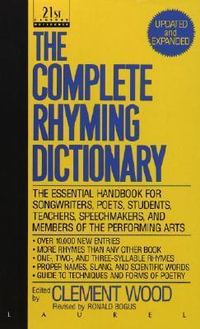





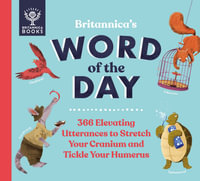
![Collins English Dictionary and Thesaurus Essential : All the Words You Need, Every Day [Sixth Edition] - Collins Dictionaries](https://www.booktopia.com.au/covers/200/9780008309411/6208/collins-english-dictionary-and-thesaurus-essential.jpg)


